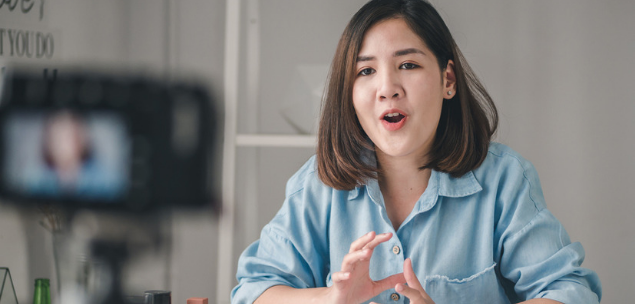Recently Dynamic Business attended “Making Influencer Marketing a Success”, a panel discussion focused on helping brands make sense of what defines a great influencer campaign, the questions to ask and the data to look for.
This was hosted by Taryn who was joined by Bernice Averion, Growth Marketer at Koala.com and Sally O’Neil @thefitfoodieblog, influencer, Jamie Oliver ambassador, food blogger and photographer.
The event’s take away learnings are summarised below, including the benefits of influencer marketing and the steps to take in approaching an influencer to elevate your brand.
Influencers help brands gain trust and credibility. A huge amount (49%) of consumers depend on influencer recommendations on social media, so businesses that are yet to embrace the full capability of social networks are definitely behind in the marketing game.
The power of influencers is real, with 71% of consumers more likely to make a purchase if they have seen a recommendation from someone they follow online. On average businesses can generate $6.50 for every $1 invested into influencer marketing, according to the latest poll from influencer marketplace Tomoson.
The panel discussed how, perhaps unsurprisingly, Instagram drives the most engagement per post compared to any social network; engagement levels are 10 times higher than Facebook and a whopping 84 times higher than Twitter. The value of an Instagram influencer is also higher, with an average order of around $65 compared with $55 on Facebook.
Taryn Williams, CEO and founder of theright.fit, a two-sided marketplace connecting brands with creative talent and influencers, shared these steps for businesses looking to work with influencers:
- Start with your influencer campaign goals – Are you looking to grow your audience, engagement, conversions or your loyalty?
- Know your target customer – Don’t just give a demographic, get specific and describe what they look like, what they like, make up their name and get clear on what they do daily.
- Identify suitable influencers – You should be looking at and evaluating the following factors:
- Engagement rate
- Audience relevance – Age, location, gender
- Quality of content
- Organic growth
- Quality of audience
- Creativity of storytelling
- Brand sentiment on paid posts
Before you even get started, make sure the influencer isn’t and hasn’t worked with your competitors before and establish a clear creative brief that allows collaboration between your brand and the influencer for maximum results.
Koala.com, Australia’s fastest-growing mattress company, is one business that is utilising influencer marketing and reaping the rewards. Growth Marketer Bernice Averion said that the overwhelming majority of their sales last year came from her top 10 performing influencers. She currently manages around 140 influencers in total and the top performing influencer was able to bring in approximately $300,000 for the business alone.
Bernice has a very clear idea of what works well for the brand and has strict criteria and contracts in place for the influencers she chooses to work with. For example, Koala.com has the full rights to their posts and has permission to repurpose and boost it themselves (put ad spend behind it).
Bernice’s take-aways so far have been:
- to work with influencers of 200,000 followers or less due to engagement rates
- to make the content relevant to the influencer – for example if they have just moved house, or are pregnant
- Instagram performs much better for them versus YouTube
- investigating the kind of content the influencer makes to ensure they are a good fit
- negotiating prices for longer term contracts (1-2 year)
- provide each influencer with a unique link and track that link through google campaign manager to see how well posts perform
- ensure timings of posts to get the most accurate readings of post results (if posts are too close together it’s hard to see which one performed best)
- understanding a mattress is a high ticket item and purchases are not instant, instead measuring the long-term relationship effect and potential purchases within 28 days
- video posts receive highest engagements
- ask for a list of different content the influencer can provide as to negotiate on price i.e. static imagery should cost less than video
Roughly 20 influencers apply to work with Koala.com per week, so they can afford to be selective and fight the right fit!
Sally O’Neil (@thefitfoodieblog), weighed in on influencer marketing from the influencer perspective. Both Sally and Bernice use theright.fit platform however from different ends. Sally has a following of just over 90,000 people and is primarily a food photographer.
As an influencer, she said she is looking to collaborate with brands and often sees creative briefs that are either too strict with their guidelines and requirements or they lack the information she needs.
As influencer marketing is a relatively new concept in recent years, but one that also doesn’t look like it’s going away any time soon, it’s important that businesses know how to make the most out of it.
These are the key things that Dynamic Business took away from Sally’s experiences:
- be clear on what hashtags you want the influencer to use, and where they should go (in the post or as a comment)
- ask the influencer questions on what they think their audience will respond to – they know their people better than you do
- be specific on the tags that you want in the photo
- don’t assume the influencer knows about your brand
- give a good understanding of what the goal of the campaign is
- don’t necessarily worry about engagement as engagement is now lower than ever – people scroll and comment/’like’ less, however there are still many eyes viewing the post, so consider the reach more than the engagement right now

